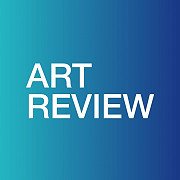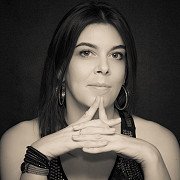CAN ARTISTS BE REPLACED BY ROBOTS?

Don’t rest from art’s creation, To sleep do not succumb. For time’s incarceration Must endless beat its drum. Boris Pasternak
Everything seemed to be quite usual when the painting Portrait of Edmond Belami was sold for 432.5 thousand dollars at Christieʼs Prints and Multiples in New York. This is a 70 X 70 cm print on canvas. Everything was usual except the fact that the artwork was created by artificial intelligence. Instead of the artist’s signature, in the lower right corner, there is an algebraic algorithm by means of which the painting was created. By comparison, an artwork by Andy Warhol, a classic artist of modernism, was sold for 75 thousand dollars at about the same time. At first nobody believed the wonder-machine could make anything decent, and therefore initially it was estimated at 7-10 thousand dollars. However, an anonymous buyer paid for the artwork 45 times more than predicted. 45 was the coefficient of growth of the artwork’s price during the auction! Behind this new trend in art there is a student team called Obvious consisting of three 25-year-old programmers. The creators of the incredible artwork, Hugo Caselles-Dupré, Pierre Fautrel and Gauthier Vernier, will now receive about 100 thousand dollars each. The painting depicts a man in a black suit with a white collar and blurred face. Paradoxically, the portrait created by a non-existent artist depicts a nonexistent person Edmond De Belami. This is one of 11 portraits of members of a fictional family. According to the legend, invented by programmers, he is a great-grandson of the progenitor Count Belami. Not only the family tree is elaborated to the last detail, but also the family name. In 2014, a researcher named Ian Goodfellow invented the Generative Adversarial Networks (GAN). In the opinion of Obvious programmers, Belami (Fr. belle amie) is a concordant analogue for the name Goodfellow. Portraits of the rest of the family are supposed to be created in the same way. What is the innovation here? To create the artwork, the programmers used the generative adversarial network and a self-learning machine algorithm. Two programs were involved. One program, the generator, had learned to create portraits in different styles. To achieve this purpose it had analyzed 15,000 portraits painted by artists of the 14th and 20th centuries, and reproduced them. The other program, the discriminator, compared paintings of artists of the past and the generator’s reproductions of them until it had seen no difference between the real artists artworks and the generator’s paintings. According to the authors of the project, the difference between the artworks of artists and those of the robot can no longer be seen not only by a computer program, but also by painting experts. Representatives of Christie's said that this is the first artwork created by artificial intelligence in history, sold at a big auction. The curator of the auction, Richard Lloyd, shared his opinion that artificial intelligence will definitely influence the art market in the future, but it is too early to say what changes will ensue. One thing is clear, artists have got an unexpected competitor, and it’s time to learn to amaze the art world with wonders that are impossible for computer programs so far.



















